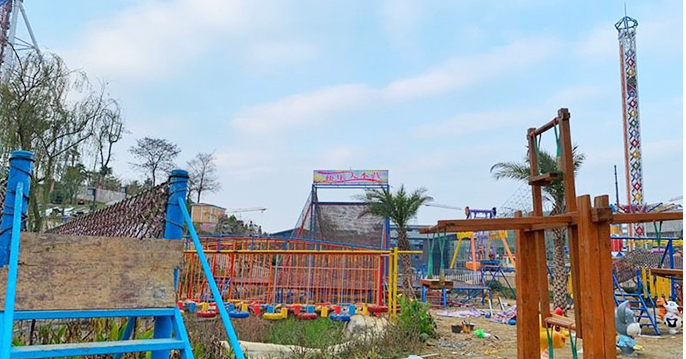- Albanian
- Arabic
- Belarusian
- Bengali
- Czech
- English
- French
- German
- Hebrew
- Hungarian
- Indonesian
- irish
- Italian
- Japanese
- kazakh
- Persian
- Russian
- Thai
- Uzbek
- Vietnamese
basic roller coaster design
Designing the Basic Roller Coaster A Thrilling Journey into Physics and Engineering
Roller coasters are often considered the pinnacle of amusement park attractions, combining physics, engineering, and creativity to deliver thrilling experiences. Designing a basic roller coaster involves understanding several key principles that contribute to its functionality, safety, and excitement. This article explores the fundamental elements involved in roller coaster design and how they come together to create a thrilling ride.
The Fundamentals of Roller Coaster Design
At its core, a roller coaster is a series of track segments arranged in a way that allows cars to move through various loops, turns, and drops. The design must ensure that the ride is not only exhilarating but also safe. Here are some of the basic principles involved in designing a roller coaster
1. Kinetic and Potential Energy The ride operates primarily on the principles of kinetic and potential energy. As the coaster ascends to the highest point of the track, it gains potential energy. When the coaster drops, this potential energy is converted into kinetic energy. This interplay between the two forms of energy results in the thrilling sensations riders experience, such as weightlessness during drops and exhilarating acceleration on the way down.
2. Gravity and Centripetal Force Gravity pulls the coaster downwards, while centripetal force keeps the cars on the track during turns and loops. Designers must carefully calculate the radius of curves and the height of drops to ensure that the forces acting on the coaster remain within safe limits. The balance between gravitational pull and the centripetal force generated during a curve is crucial for maintaining rider safety and comfort.
3. Material Selection The choice of materials significantly affects the structural integrity and safety of a roller coaster. Steel and wood are the two primary materials used in construction. Steel coasters tend to offer smoother rides and can achieve more complex designs and heights. In contrast, wooden coasters provide a classic experience with a different kind of thrill. Each material has its own set of advantages and challenges, and the choice depends on the type of ride being developed.
basic roller coaster design

4. Track Design The layout of the track is where creativity comes into play. A well-designed track incorporates various elements such as hills, turns, and inversions to enhance the ride experience. Elements such as bunny hops, corkscrews, and vertical loops can create dynamic physical sensations. The smoothness of the transitions between these elements is also vital to ensure rider comfort while maintaining excitement.
5. Safety Features Safety is paramount in roller coaster design. Engineers must incorporate numerous safety features, such as secure restraints, reliable braking systems, and emergency evacuation procedures. Each aspect of the ride must undergo thorough testing and adhere to strict regulatory standards to minimize risks.
The Experience of Riding a Roller Coaster
The ultimate goal of roller coaster design is to deliver a memorable ride experience. Factors such as speed, height, and the sequence of elements all contribute to the overall thrill. For instance, a steep drop can elicit screams of excitement, while sudden turns can create a feeling of weightlessness.
Moreover, the aesthetic experience plays a vital role in how riders perceive the coaster. Theming, such as creating a narrative or visual style, adds depth to the ride, making it more engaging. For example, a roller coaster themed around a volcano may incorporate fiery decorations and sound effects to immerse riders in the experience.
Conclusion
Designing a basic roller coaster involves a harmonious blend of physics, engineering, and creativity. By understanding the principles of kinetic and potential energy, considering material selection, and integrating safety protocols, designers can create thrilling rides that captivate audiences. As technology advances, the possibilities for roller coaster design continue to expand, promising even more exhilarating experiences for thrill-seekers in the years to come. Whether it’s a simple wooden structure or a complex steel marvel, the basic roller coaster remains a symbol of fun and excitement in amusement parks worldwide, proving that the ultimate thrill also lies in the ingenious design behind each twist and turn.
-
Flume Ride-Hebei Zhipao Amusement Equipment Manufacturing Co., Ltd.|Thrilling Water Attraction&NIST Safety StandardsAug.01,2025
-
Double Ferris Wheel Sale | Premium Custom RidesJul.31,2025
-
Flume Ride-Hebei Zhipao|Water-Based Attraction, Safety Standards, High-Speed DescentJul.31,2025
-
Flume Ride: Thrilling Water-Based Adventure & Advanced Engineering - Hebei ZhipaoJul.31,2025
-
Flume Ride-Hebei Zhipao Amusement Equipment Manufacturing Co., Ltd.|Thrilling Water Attraction&Customizable DesignJul.30,2025
-
Flume Ride - Hebei Zhipao Amusement Equipment | Water Coaster, Thrilling DescentJul.30,2025
